…And you won’t be able to tell the difference
2017 is the year that copywriting by Artificial Intelligence (AI) has moved from science fiction fantasy to commercial fact. Game-changing new tools mean that computers can now produce convincing, accurate product descriptions that look as if they were penned by a trained copywriter. The future has arrived.
Many people regard AI as a bit of a joke and cannot imagine a day when software will write better than humans. Tay, the ill-fated Microsoft chatbot, became a laughing stock when she went from innocently playful tweets to racist rants and swear words in just 24 hours.
Who wouldn’t snigger at the romance novel titles generated by a state of the art neural pathway software, including such classics as Surgery Seduction, The Man for Dr. Husband and Lady Convenience Wife?
Yet in 2016 a world first for AI writing occurred at the Rio Olympics. The Washington Post covered 300 events using Heliograf, their in-house AI software. These robot-generated articles were published alongside ones written by humans.
Crucially, no-one spotted the difference. The paper now regularly uses Heliograf for sports reports like the one below and the same software is used under license by news organizations around the world.
Massive investment in Artificial Intelligence
So why has AI suddenly got so advanced? One reason is a recent explosion in investment that is now starting to bear fruit. Since 2014, AI has been a hot new target for ambitious venture capital funds. Across Europe, fundraising is booming. In 2017 there were 271 funding rounds for AI start-ups raising an average of $3.7m each, according to Serena Capital. That was a 250% increase on the previous year of 83 rounds.
Although these include a broad spectrum of AI specialties, not just those involved with Natural Language Processing (NLP), the trend is clear. It’s little wonder that Gartner predicts that by 2018, 20% of all content will be authored by machines and the International Data Corporation (IDC) estimates that the AI market will grow from $8billion in 2016 to more than $47billion in 2020.
Natural Language Understanding v Natural Language Generation
Any human who tries to learn a new language generally finds it easier to understand than to write or converse. Computers are the same. Natural Language Understanding (NLU) is much easier for them than Natural Language Generation (NLG).
NLU software is brilliant at hunting for keywords or key concepts in documents or the spoken word or rapidly scan thousands of pages and making sense of it all. However, NLU can’t create an article worthy of the Washington Post.
For that you need its much smarter cousin, NLG, the software designed to create original text from scratch that could soon be writing your web copy. Because it’s so difficult there are hundreds of tech firms worldwide working in NLU but only a handful dedicated to NLG.
Beautiful writing by Quill
An acknowledged leader in the field of Natural Language Generation (NLG) is Chicago-based Narrative Science and its platform Quill. Many NLG systems so far have been underpinned by templates, which is why so many sound robotic.
By contrast, Quill is smart enough to understand the user’s intent, pick out what’s interesting and develop an understanding of the story to be told. Feed it some structured data and Quill will transform it into a written narrative with a tone and style that reads as if a living person had sat down and tapped it out on a keyboard.
Customers of Narrative Science are a diverse bunch, including USAA, Mastercard, and the US Intelligence community. The company also works with over forty different partners including Microsoft, Deloitte and Tableau.
Product description copy written by a computer
One of its partners, Indix, has developed a Products Information Platform that marries the writing capabilities of Quill with its own vast catalogue of product data. To date it has collected information on over a billion branded products, plucking details from internet sources such as retail and brand websites and feeds.
Indix then uses AI and machine learning to clean, refine and structure each record into a standardized format. Key details such as category, price, size, availability and other features are all captured, ready to be made into unique, search engine optimized product descriptions. It’s hard to believe that this copy for adhesive (below) was written by a computer:
Say you have a website selling barbecues. At the moment, you would need to get specifications from a dozen or more different manufacturers. All the sizes, burner and grate specifications, colour options, accessories and other attributes come to you in different formats, often with key features missing.
You then have to rearrange them into a standard order and write some copy in your brand style. Each one has to be checked for accuracy, approved for tone and style and tracked as it makes its way through the system. It’s expensive, laborious and time consuming with lots of potential for error.
That could soon be a thing of the past. Once everything is set up, Indix can create vast numbers of standardized product descriptions in just a few hours, all guaranteed accurate, free of spelling errors, optimized for search engines and at incredibly low cost. If copy needs to be split tested, Indix can swiftly and easily generate two different versions, such as one with bullet points and one without.
Copywriting project management
Over the years, I have headed up teams of writers producing large amounts of product copy. There is striking parallels in the way those projects are managed and the AI process.
Both start with a setup phase, in which a master document is created with all the available information for every product. I give the writers examples of tone and style while Indix builds a phrase library. In both scenarios a tight specification is drawn up defining attributes such as word count, number of bullets, keywords, where the benefits should appear, important features not obvious from the product photos and call to action.
If you think that sounds rather uncreative, then you’re right. There’s a place for creativity in copywriting, but a product page is not it. Consumers want clear information not poetry. In a previous blog about large-scale copywriting projects, I argued that a cookie-cutter approach not only improves conversion but also reduces costs and frees up management resources.
Indix may not be for everyone, however. It currently only offers the service for products that are already on sale elsewhere. That’s not so helpful if you are the manufacturer selling direct and exclusively, although in future it may be possible to use the same system with data from your own records. The other hurdle is a minimum quantity of 10,000 products, which rules out many of the smaller and mid-sized ecommerce sites.
Email subject lines written by robots
Another trailblazer in the NLG field is London-based Phrasee. It specializes in writing email subject lines. It’s a crucial part of the marketing because if an email isn’t opened it doesn’t get read. Phrasee’s technology is so advanced it captures the brand voice with uncanny accuracy and can even include emojis, emotions, colloquialisms, and alliteration.
Using science to learn what makes the audience tick, its software measures thousands of data points including behavioural analytics as well as emotional drivers. Split testing of the subject lines and scheduling is handled by the client’s Email Service Provider (ESP).
Phrasee doesn’t just produce subject lines in a fraction of the time it would take a copywriter, it claims to improve them. 95% of its AI-generated subject lines outperform those written by humans, like this one for the loyalty card Nectar which gained 41% more opens and 64% more click-throughs:
- Control (human being) - 3x points AND 50% off Virgin Trains East Coast Advance Tickets
- New (AI) - After 18 August it’ll be too late… Make huge savings and collections with 3x the points and 50% off Advance tickets
Below are three more Phrasee subject lines that all got double-digit uplifts in open and click-through rates against the same control above.
- Build up your balance…
- How many points could you collect when you book? After 18 August it’ll be too late…
- Make the most of your train journey…
Pay per algorithm
Phrasee charges a fixed fee per algorithm. Different targets, such as men or women, lapsed or loyal customers, each need their own algorithm. It’s not cheap, but the proof is in the split test results. Demonstrably higher open rates keep clients like Dominos, dfs and Wowcher coming back for more. Saul Lopes, Customer Lifecycle Lead at Virgin Holidays is a fan, because “Phrasee’s AI has increased our email revenue by a few million pounds”
It takes around 3-4 weeks for Phrasee to build an algorithm and start generating subject lines that are on-brand and appropriate. The minimum list size is around 200,000 and the technology also works best if there’s at least a year’s worth of data about the performance of old email campaigns. The more subject line results that can be fed in, the quicker the algorithm starts to get warm and produce sales busting suggestions.
Currently, Phrasee only puts its AI to work on subject lines. However, the firm does have plans to offer email body copy as well as product descriptions in the future.
AI blog posts, commentaries, and personalization
It’s not only copywriters who could have their work done by a machine. Texas-based Yseop (pronounced Easy-Op) is a self-serve software used by banks, retailers and Fortune 500 companies to write commentaries from Excel charts at the press of a button. Would you guess this (below) had been written by a computer?
Personalisation is taken to new heights by the NLG tool Wordsmith, owned by Automated Insights. In one case study, the basketball team Orlando Magic used it to create customised emails and in-app messages unique to each one of their fans, like the one below.
What does this mean for the future of writers?
I’ve been a copywriter for over twenty years, and the question everyone asks is ‘Are you worried that a robot will take over your job?’
Analyst Henry H Eckerson of Eckerson Group believes that will happen.
“In some cases NLG tools will reduce the number of people required to generate and analyze data. For business owners, this is great news: they can reassign staff to other jobs, increase their productivity, or lay them off”
AI vendors refute this, claiming that NLG tools augment, rather than replace, the writers and free up skilled staff to focus on higher value tasks, such as reading and acting on the reports generated.
Arden Manning, Senior Vice-President at Yseop says,
“None of us went to University to write data-driven reports all day long, but for many of us that is the reality. Asking highly educated analysts to write data-driven reports is a waste of time, money and human capacity.”
Jeremy Gilbert, Director of Strategic Initiatives at the Washington Post concurs:
“In no way do we want to replace human reporters with automated reporters,” he said. “We want to free up reporters to do the kind of high-impact stories they want to do.”
From my perspective as an experienced copywriter, I feel the same. It’s much more interesting to write a radio commercial or develop a new brand positioning than spend all day churning out standardized bullet points. There have been times when that’s actually made me feel like a robot!
But it was product descriptions that I cut my teeth on as a junior writer. If those kinds of writing opportunities disappear, how do the next generation of copywriters perfect their craft? The industry as a whole will need to rethink training and qualifications for copywriters. If that helps humans stay smarter than robots, it’s got to be a good thing.
from Blog – Smart Insights https://www.smartinsights.com/persuasion-marketing/web-copywriting/yes-robot-can-write-advertizing-copy-heres/
via Tumblr http://euro3plast-fr.tumblr.com/post/167942217309
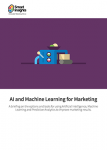
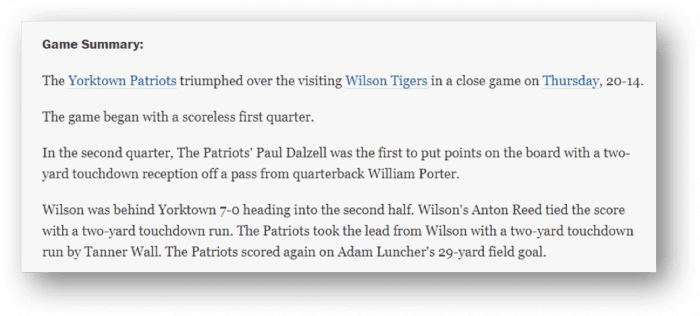
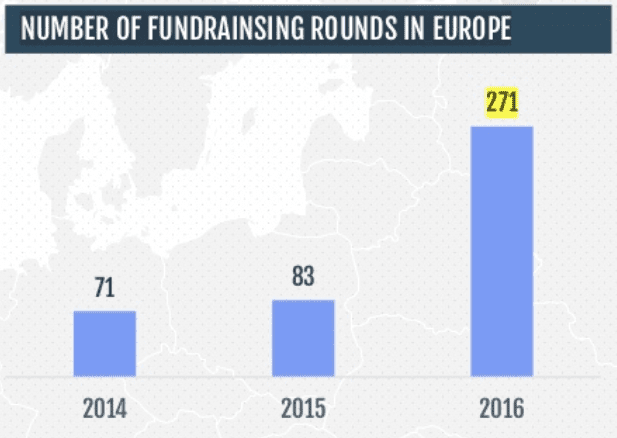
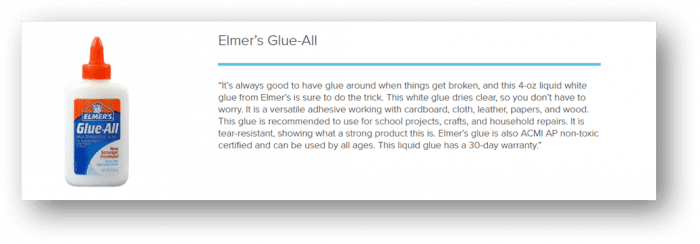
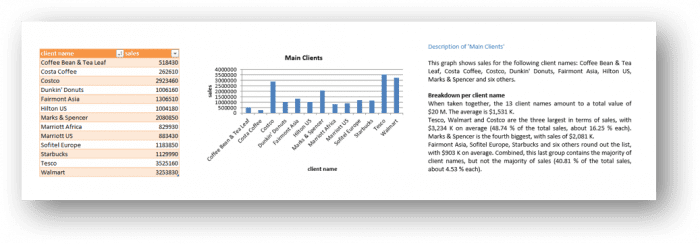
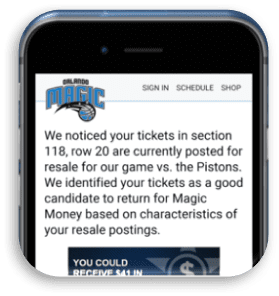
No comments:
Post a Comment